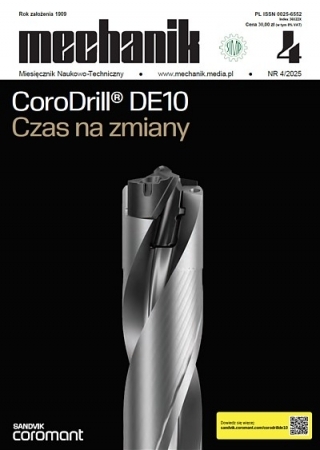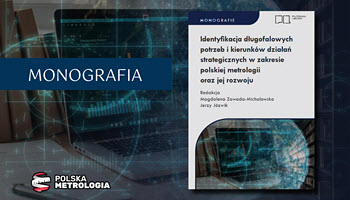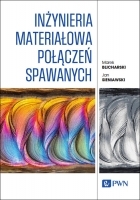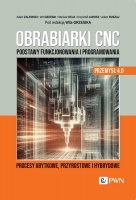Some aspects of combining the burnishing processes of metal and alloys with other treatments
Wybrane aspekty łączenia procesu nagniatania z innymi rodzajami obróbek stopów metali
Mechanik nr 02/2015 - Artykuły z Międzynarodowej Konferencji Innovative Manufacturing Technology IMT 2014 zamieszczone na płycie CD
ABSTRACT: Recent developments in combined processes of burnishing and other treatments for enhancing surface integrity of metals and alloys for tools, machine parts and other products are presented. These treatments include laser, cryogenic, ultrasonic, vibration, electrochemical and thermal- chemical processes. Some examples of the influence of different treatments, combined with burnishing, on materials surface geometric structure and microhardness are given.
In particular hybrid laser-assisted burnishing (LAB) processes are presented. During LAB, the workpiece surface layer is temporarily and locally softened by a controllable laser beam, and then immediately processed by a burnishing tool. LAB processing and conventional burnishing experiments were conducted on different alloys, including MP35N, a multiphase superalloy, initially of 45 HRC. It is shown by these experiments that LAB can produce much better surface finish, higher surface hardness and similar compressive residual stress compared to the conventional burnishing.
Cryogenic burnishing is also discussed; the application of cryogenic cooling with liquid nitrogen during the burnishing process of the Ti-6Al-4V alloy produced the severe plastically deformed (SPD) layer of increased hardness and depth in comparison to the conventional flood-cooled or dry burnished layer.
Some results of research performed at IAMT are given; they were focused on the combined processes of burnishing and nitriding the conventional Sverker 21 and powder metallurgy (PM) Vanadis 6 tool steel grades. The results indicated that the effect of the burnishing process when applied prior to nitriding was beneficial for the surface layer properties causing an increase of nitrogen contents and hardness.
Basing on the analyses and results of investigations, synergistic effects of the above mentioned combined processes of different surface treatments and burnishing were proved.
KEYWORDS: laser assisted burnishing, cryogenic burnishing, nitriding, surface layer, surface geometric structure, metal alloy.
STRESZCZENIE: Przedstawiono w skrócie aktualny stan zagadnienia procesów łączonych obróbki nagniataniem z innymi rodzajami obróbek w celu uzyskania lepszych właściwości warstwy wierzchniej metali i ich stopów przeznaczonych na narzędzia, części maszyn i inne wyroby. Do obróbek tych należą procesy laserowe, kriogeniczne, ultradźwiękowe, wibracyjne, elektro-chemiczne i cieplno-chemiczne. Podano przykłady wpływu różnych obróbek w połączeniu z nagniataniem na właściwości struktury geometrycznej powierzchni i mikrotwardość.
W szczególności omówiono procesy hybrydowe nagniatania wspomaganego laserem (laser assisted burnishing – LAB), polegające na okresowym i lokalnym zmiękczeniu warstwy wierzchniej materiału obrabianego wiązką laserową i następującej natychmiast po tym obróbce za pomocą narzędzia nagniatającego. Procesy LAB stosowane były na różnych stopach, m.in. na wielofazowym nadstopie MP35N o twardości początkowej 45 HRC; wykazano, że pozwoliły one na uzyskanie mniejszej chropowatości i wyższej twardości powierzchni niż w przypadku stosowania konwencjonalnego nagniatania, przy podobnym poziomie naprężeń ściskających szczątkowych.
Omówiono także nagniatanie kriogeniczne, w którym stosowano chłodzenie ciekłym azotem, uzyskując na stopie Ti-6Al-4V silnie plastycznie odkształconą (severe plastically deformed – SPD) warstwę o wyższej twardości i występującej na większej głębokości niż w przypadku nagniatania konwencjonalnego z obfitym chłodzeniem cieczą obróbkową lub na sucho.
Zamieszczono wybrane wyniki badań przeprowadzonych w IZTW procesu łączonego obejmującego nagniatanie i azotowanie stali narzędziowych: konwencjonalnej Sverker 21 i proszkowej Vanadis 6. Badania wykazały istotny wzrost zawartości azotu w warstwie wierzchniej i jej twardości.
Na podstawie analiz i wyników stwierdzono synergiczny efekt zastosowania wymienionych wyżej obróbek powierzchniowych w połączeniu z nagniataniem.
SŁOWA KLUCZOWE: nagniatanie wspomagane laserem, nagniatanie kriogeniczne, azotowanie, warstwa wierzchnia, struktura geometryczna powierzchni, stop metali.
BIBLIOGRAFIA / BIBLIOGRAPHY:
- PRZYBYLSKI W.: Technologia obróbki nagniataniem. Wydawnictwo Naukowo – Techniczne, Warszawa 1987.
- KORZYŃSKI M.: Nagniatanie ślizgowe. Wydawnictwo Naukowo – Techniczne, Warszawa 2007.
- POLOWSKI W.: Nagniatanie. Rozdział w Poradniku inżyniera, konstruktora i mechanika „Obróbka skrawaniem w praktyce” pod redakcją J. Stósa. Wydawnictwo Verlag Dashofer, Warszawa, 2008.
- RADZIEJEWSKA J., KALITA W.: Surface topography and contact stiffness after laser-mechanical treatment. Proceedings of the 5th International Conference on ADVANCES IN PRODUCTION ENGINEERING. Warszawa 2010.
- RADZIEJEWSKA J. (2012). Application of Laser-Burnishing Treatment for Improvement of Surface Layer Properties, CO2 Laser - Optimisation and Application, Dr. Dan C. Dumitras (Ed.), ISBN: 978-953-51-0351-6, InTech, DOI: 10.5772/38485. Available from: http://www.intechopen.com/books/co2-laser-optimisation-and-application/application-of-laser-burnishing-treatment-for-impovement-of-surface-layer-properties
- TIAN Y., SHIN Y.C.: Laser-assisted burnishing of metals. International Journal of Machine Tools & Manufacture 47 (2007) 14–22.
- LAUWERS B., KLOCKE F., KLINK A., TEKKAYA A.E., NEUGEBAUER R., MCINTOSH D.: Hybrid processes in manufacturing. CIRP Annals – Manufacturing Technology 63, 2014, 561-583.
- CAUDILL J., HUANG B., ARVIN C., SCHOOP J., MEYER K., JAWAHIR I.S.: Enhancing the surface integrity of Ti-6Al-4V alloy through cryogenic burnishing. 2nd CIRP 2nd CIRP Conference on Surface Integrity (CSI). Procedia CIRP 13 ( 2014 ) 243 – 248.
- ŻAK K., GRZESIK W.: Investigation of technological effects of ball burnishing after cryogenic turning of hard steel. Advances in Manufacturing Science and Technology, vol. 38, No. 1, 2014.
- JAWAHIR I.S., PU Z.,YAN S., ROTELLA G., KAYNAK Y., LU T., DESHPANDE A., UMBRELLO D., DILLON O.W.: Cryogenic processing of materials for enhanced product life, performance and sustainability. Proc. of 15th International Conference on Advances in Materials and Processing Technologies, Wollongong, Australia, 2012.
- YANG S., PULEO D.A., DILLON O.W. Jr., JAWAHIR I.S.: Surface layer modification in Co-Cr-Mo biomedical alloy from cryogenic burnishing. 1st CIRP Conference on Surface Integrity (CSI). Procedia Engineering 19 (2011), 383-388.
- YANG S.: Cryogenic burnishing of Co-Cr-Mo biomedical alloy for enhanced surface integrity and improved wear performance. Doctoral Dissertation (2012) University of Kentucky. Theses and Dissertations-Mechanical Engineering. Paper 10. http://uknowledge.uky.edu/me_etds/10
- WRÓBLEWSKI G., SKALSKI K.: Properties of surface layer generated by new combined process of burnishing and nitriding. Surface Engineering. Vol. 22, No. 2, 2006, 138-146.
- KIKUCHI S., KOMOTORI J.: Effect of fine particle peening treatment prior to nitriding on fatigue properties of AISI 4135 steel. Journal of Solid Mechanics and Materials Engineering. Vol. 2, No. 11, 2008, 1444-1450.
- ŁUPICKA O., WARCHOLIŃSKI B.: Kształtowanie warstwy wierzchniej w połączonych procesach kulowania i azotowania na przykładzie stali 40HM (42CrMo4). Inżynieria Powierzchni 4 – 2011.
- HUUKI J., LAAKSO S. VA : Integrity of surface finished with ultrasonic burnishing. Proc IMech Part B: J Engineering Manufacture, 227 (I) 45-53, 2012.
- GRAS G.G., TRAVIESO-RODRIGUEZ J.A., GONZALES-ROJAS H., NAPOLES-ALBERRO A., CARILLO F., DESSEIN G.: Study of a ball-burnishing vibration-assisted tool. Journal of Trends in the Development of Machinery and Associated Technology. Vol.17, No. 1, 2013, ISSN 2303-4009 (on line), pp 49-53.
- EL-TAWEEL T.A., EBEID S.J.: Effect of hybrid electrochemical smoothing–roller burnishing process parameters on roundness error and micro-hardness. The International Journal of Advanced Manufacturing Technology, vol. 42, Issue 7-8, 2009, pp 643-655.
- NOWICKI B., PODOLAK-LEJTAS P.: Investigations of the effect with burnishing process on the condition of the surface layer. Advances in Manufacturing Science and Technology, vol. 32, No. 4, 2008.
- YAN B.H., LIN Y.C., HUANG F.Y.: Surface modification of Al-Zn-Mg alloy by combined electrical discharge machining with ball burnish machining. Int. Journal of Machine Tools & Manufacture 42 (2002) 925-934.
- ZEGHNI A.E., HASHMI M.S.J.: The Effect of coating and nitriding on the wear behaviour of tool steel. Journal of Materials Processing Technology, 155-156 (2004) 1918 – 1922.
- MATERIAŁY INFORMACYJNE FIRMY UDDEHOLM: Uddeholm Vanadis® 6 Brochure, Edition 4, 05.2011, pp. 1-10.
- MATERIAŁY INFORMACYJNE FIRMY UDDEHOLM: Uddeholm Sverker® 21 Brochure, Edition 8, 72.2013, pp. 1-12.
- BERKOWSKI L., BOROWSKI L.: Wpływ struktury na skutki azotowania chromowych stali ledeburytycznych. Część III: Warunki obróbki cieplnej stali NC11LV. Obróbka Plastyczna Metali, t. XVIII nr 3, 2007.
- JURČI P.: Structural changes in cr-v ledeburitic steel during austenitizing and quenching. Materials Engineering, Vol. 17, 2010, No. 1
- JAWORSKA L., STOBIERSKI L., TWARDOWSKA A., KRÓLICKA D.: Preparation of materials based on Ti–Si–C systems using high temperature–high pressure method. Journal of Materials Processing Technology (162–163) 2005, 184–189.
- JAWORSKA L., SZUTKOWSKA M., MORGIEL J., STOBIERSKI L., LIS J.: Ti3SiC2 as a bonding phase in diamond composites. Journal of Materials Science Letters (20), 2001, 1783-1786.
- TOBOŁA D., RUSEK P., POLOWSKI W., CZECHOWSKI K.: Badania nad doborem warunków gładkościowego nagniatania ślizgowego stali narzędziowych konwencjonalnej i proszkowej. Obróbka skrawaniem interakcja proces-obrabiarka; Szkoła Obróbki Skrawaniem nr 7, Mierzęcin, 2013, s. 185-192 (dysk CD - Mechanik 2013, R.86, nr 8-9). Poznań: Wydawnictwo Politechniki Poznańskiej, 2013.
- MAŁDZIŃSKI L.: Termodynamiczne, kinetyczne i technologiczne aspekty wytwarzania warstwy azotowanej na żelazie i stalach w procesach azotowannia gazowego. Politechnika Poznańska Rozprawy, nr 373, Wydawnictwo Politechniki Poznańskiej, Poznań 2002.
- WENDLAND J.: Kształtowanie właściwości użytkowych spiekanych materiałów metalowych poprzez regulowane azotowanie gazowe. Praca doktorska 2014. Politechnika Poznańska.





















